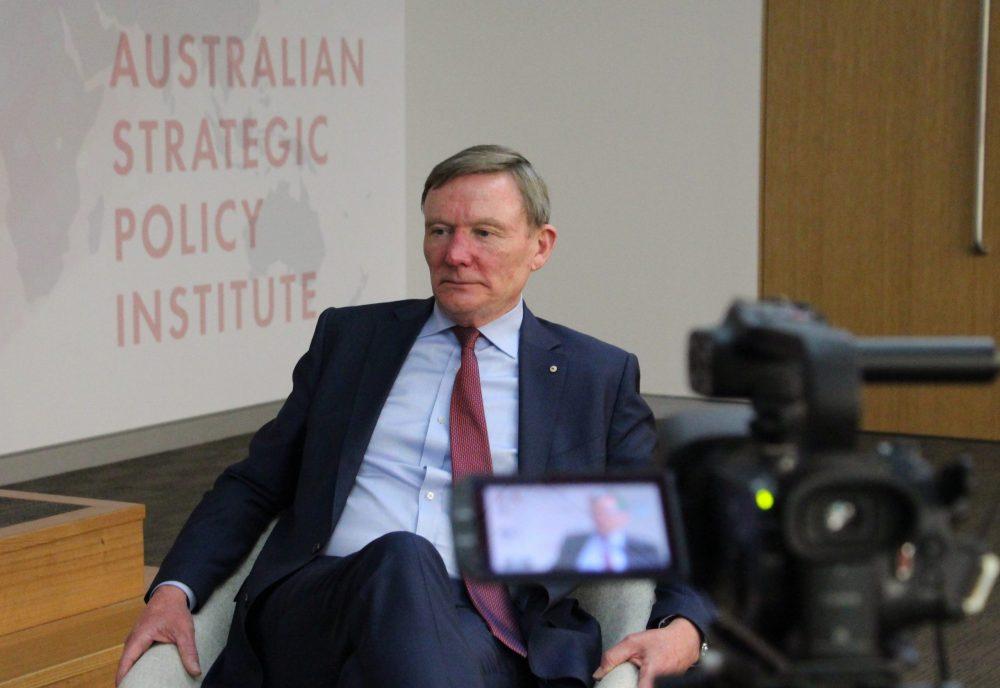
Australia’s overseas spies shelter in the most silent spaces of the spook universe.
The 68-year-old ethos of the spies of the Australian Secret Intelligence Service is never to speak publicly, just as they aim never to be seen or known.
The chief spy, the director-general of ASIS, has only ever given one public speech—back in 2012. Now, today’s top spy, Paul Symon, scores another first, with a series of video interviews with ASPI.
As the only member of ASIS whose name can be publicly revealed, Symon isn’t so much coming from the shadows as turning up the lights. In the ASPI interviews, he talks about the purposes and principles of ASIS, and spying in the 21st century.
The first interview traces how ASIS was formed and grew to become a spy service with distinct Australian characteristics.
ASIS resides within the Department of Foreign Affairs and Trade and reports to the foreign minister. Established in 1952, its early decades were marked by culture clash: diplomats feared the trouble that’d be caused by spies. ASIS officers in the field, working under diplomatic cover, were often at odds with the Australian ambassador. Diplomatic mandarins in Canberra doubted the value the spies could produce and wanted to abolish the service.
In its early decades, ASIS HQ wasn’t in Canberra, but at Melbourne’s Victoria Barracks. ASIS had close ties with its model, the British Secret Intelligence Service. For the Melbourne spy service, the SIS in London was seen as ‘head office’.
Symon observes:
For those in the diplomatic service in the early years, I can read into the history a very real anxiety about having the overt and covert elements of government working in parallel. With ASIS having cover departments like Defence and like External Affairs, it brings to the fore concerns about ‘Well, if mistakes are made, who carries the can?’ And probably in the early days when the service hadn’t built up the centre of gravity that you need to be a foreign espionage service, I think there was probably very real concern that the risks outweighed the benefits and that any gems of intelligence that we provided for the Australian government were going to be very few and far between.
The two royal commissions on intelligence by Justice Robert Hope (launched in 1974 and 1983) were seminal. The first royal commission secured ASIS’s existence and structured its relationship with the Australian intelligence community. The second royal commission killed off ASIS’s special operations or ‘attack’ function, meaning that for a couple of decades Australia’s spies couldn’t carry guns. The spies sought facts but were barred from using force.
Symon says that what Hope established with his first royal commission ‘means everything in the way that we go about doing our business and in the way we train our people. Hope made sure that there was a legal basis and a proper basis for us to undertake our functions. He articulated the legality and propriety of the work that we did.’
Hope’s model imposed a clear division between ASIS as an intelligence collection agency and the intelligence assessment to be conducted by other agencies, as Symon reflects:
[Hope] didn’t merge the two into a hybrid, the way the Americans have with the Central Intelligence Agency. He delineated between … the intelligence function and the law-enforcement function. He specifically addressed the privacy of Australians and the special requirements that intelligence agencies have to do to protect the privacy of Australians. And the other thing that Hope did very well, for which the legacy continues to this day, is the delineation between intelligence assessment and policy.
Symon sees a dynamic but positive tension between assessment and collection:
There is a risk if collection and assessment are merged, that one can contaminate the other. ‘Contaminate’ may be perhaps too harsh a word to use. But there can be a tendency that one leads the other in ways that are unhealthy. We, as a collection agency, are working to the intelligence requirements of the assessment agencies.
Hope’s second royal commission looked at a bungled ASIS training exercise in 1983 at Melbourne’s Sheraton Hotel. Hope called the exercise ‘poorly planned, poorly supervised and poorly run’.
Symon said ASIS had ‘set ourselves up for disaster’ by the way it had created a covert operation function. The covert directorate was abolished and ASIS officers were banned from carrying weapons. In 2004, officers were given permission to carry weapons for self-defence and, in 2018, legislation broadened the right to employ force, as Symon explains:
Officers can use reasonable force. They cannot use violence. There’s a series of definitions in the way the law has defined what we can do. So, really, we’re talking about the low end of the spectrum of using self-defence techniques where lethal force is inappropriate, but there might be scenarios where using proportionate low-level techniques to achieve an outcome is appropriate.
Symon had a 35-year career in the Australian Army, culminating in his achieving the rank of major general and serving as deputy chief of the army and as director of the Defence Intelligence Organisation. In 2015, he left the military to join the Department of Foreign Affairs and Trade and was appointed director-general of ASIS in December 2017.
Spies and the military share ‘an operational disposition’, he says, and an understanding of risk as ‘the heart and soul of what they’re trained to do’. From there, the public culture and purpose of the military and the secret culture of spies go different ways.
As Symon concludes in the first of the ASPI interviews, ASIS is in the people business, operating in the intelligence market for ‘the cultivation, the recruitment and the validation of agents who are betraying the secrets of their nation’.